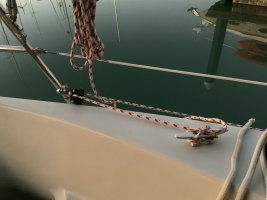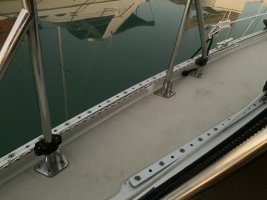I no longer have my ericson but this is a sailing question so I hope that's ok.
I was sailing my 36 footer this weekend and the wind piped up 2x what was called for. I was furling the jib in about 20k or more. Typically I let out the genoa to relieve tension and just furl. That's how I would do it on my ericson 27. Well, I was having a really hard time furling, so I let out more and more sheet. The sheet got a lot of slack in it as I clearly let out too much or too fast. I heard a pop, like a fire cracker. but got the genoa in fine. Then realized the popl was my dodger starboard window shattered.
So, what would be the proper process for furling a genoa in sportier conditions? Should I have gone into the wind? I'm finding (obviously) that the forces at play are much higher on this boat. Probably exposing mistakes I've been making but with little to no negative feedback. Some things are easier, others not compared to my 27 footer. Thanks. Hay
I was sailing my 36 footer this weekend and the wind piped up 2x what was called for. I was furling the jib in about 20k or more. Typically I let out the genoa to relieve tension and just furl. That's how I would do it on my ericson 27. Well, I was having a really hard time furling, so I let out more and more sheet. The sheet got a lot of slack in it as I clearly let out too much or too fast. I heard a pop, like a fire cracker. but got the genoa in fine. Then realized the popl was my dodger starboard window shattered.
So, what would be the proper process for furling a genoa in sportier conditions? Should I have gone into the wind? I'm finding (obviously) that the forces at play are much higher on this boat. Probably exposing mistakes I've been making but with little to no negative feedback. Some things are easier, others not compared to my 27 footer. Thanks. Hay


